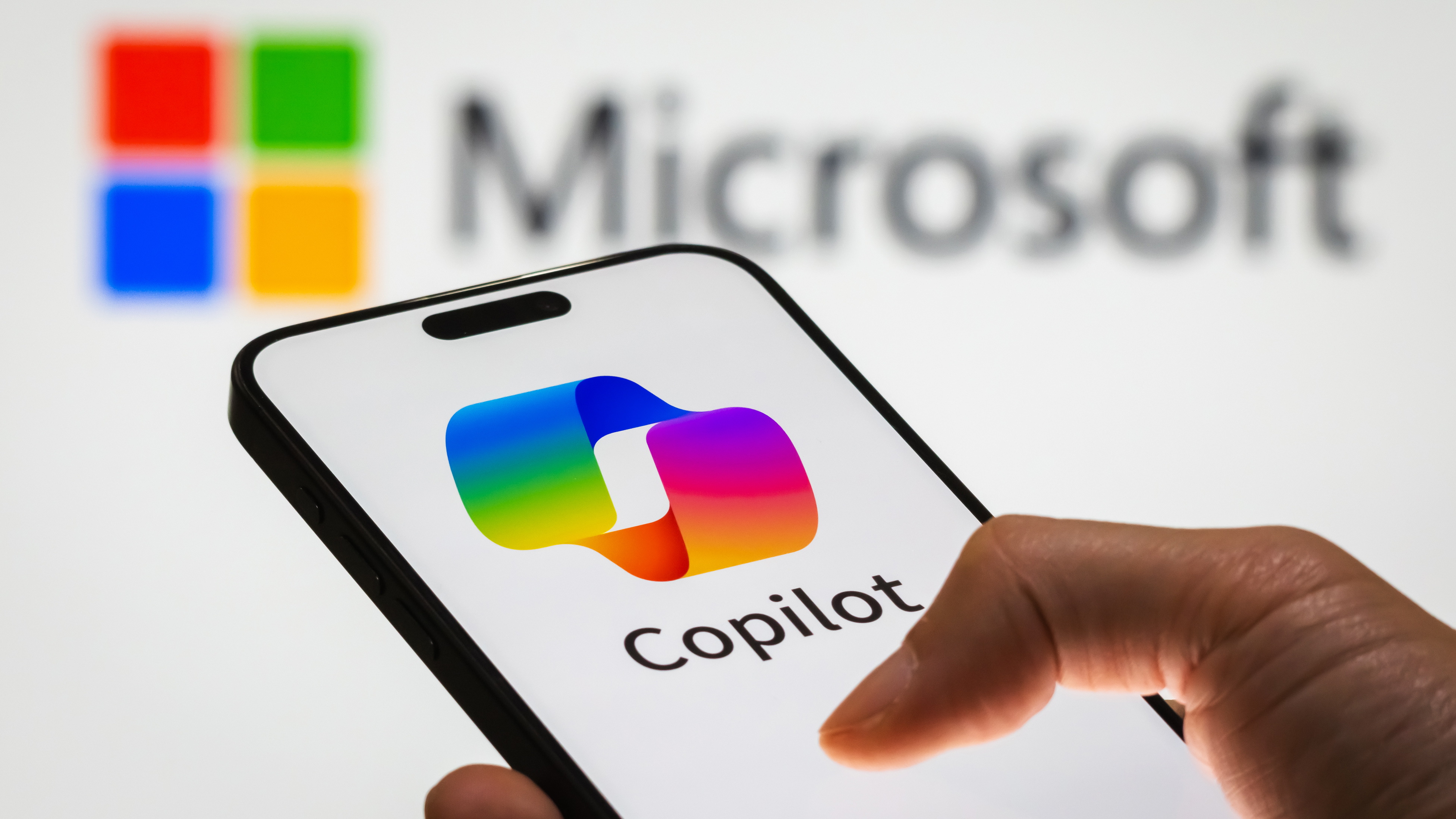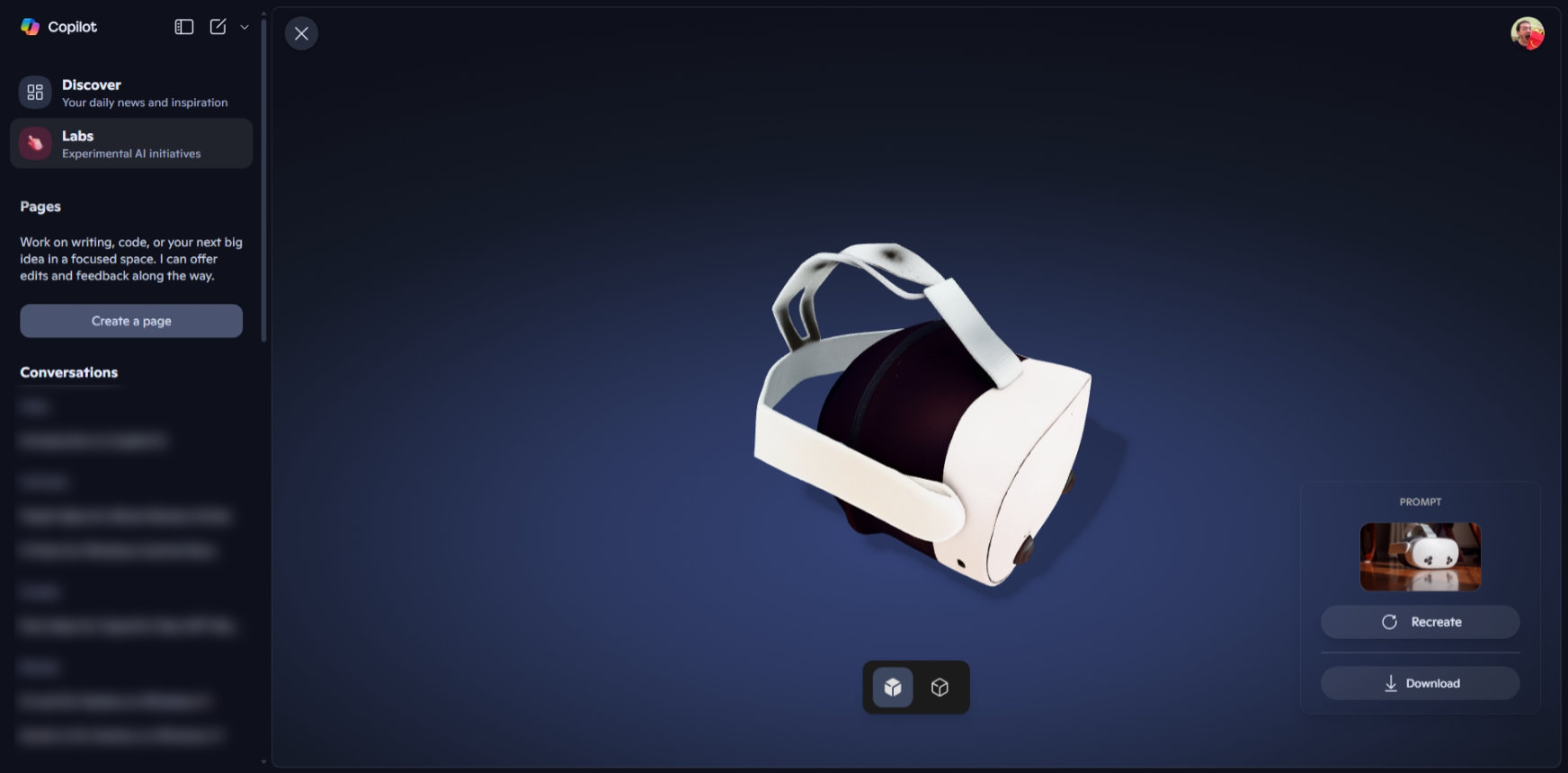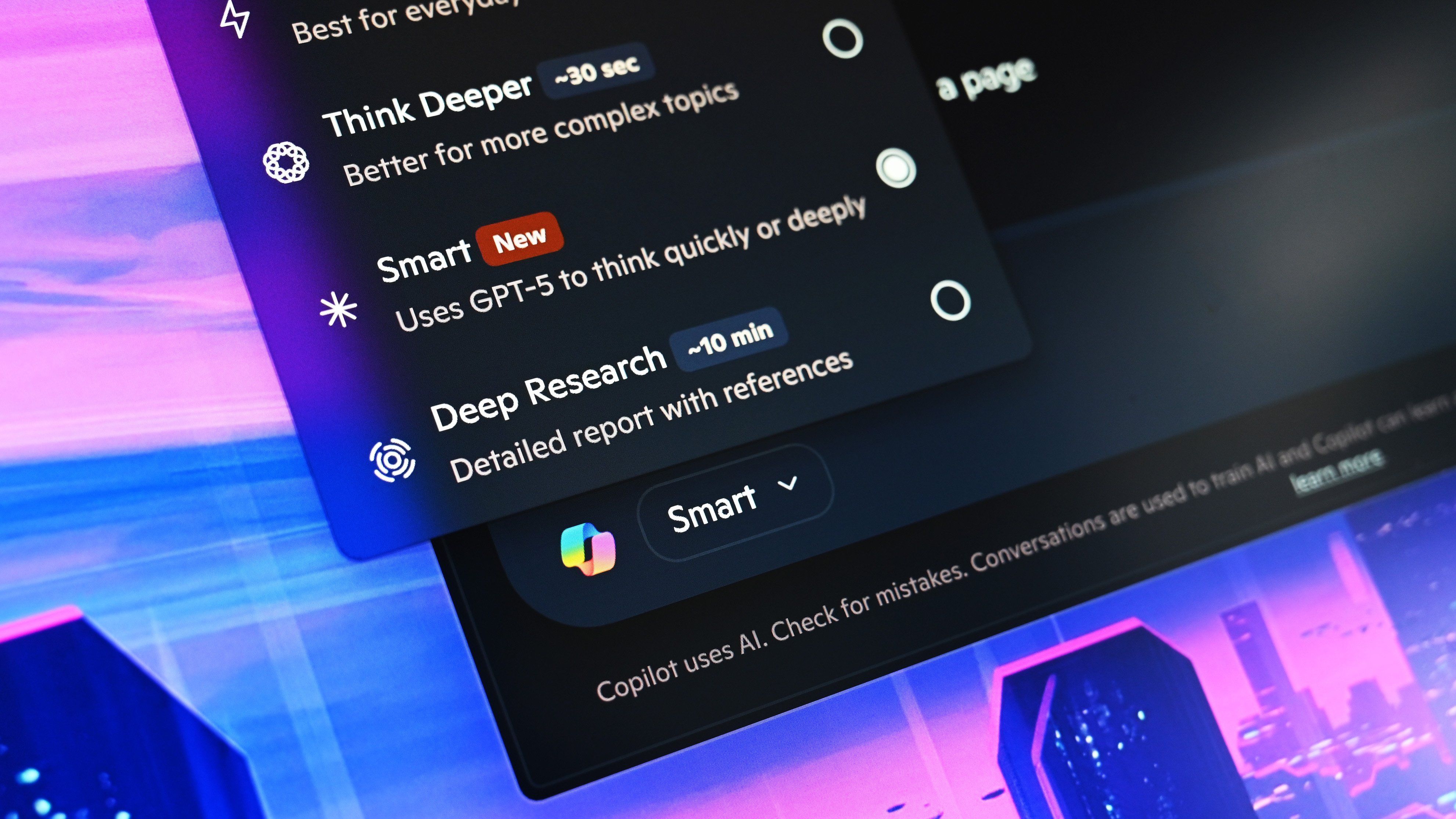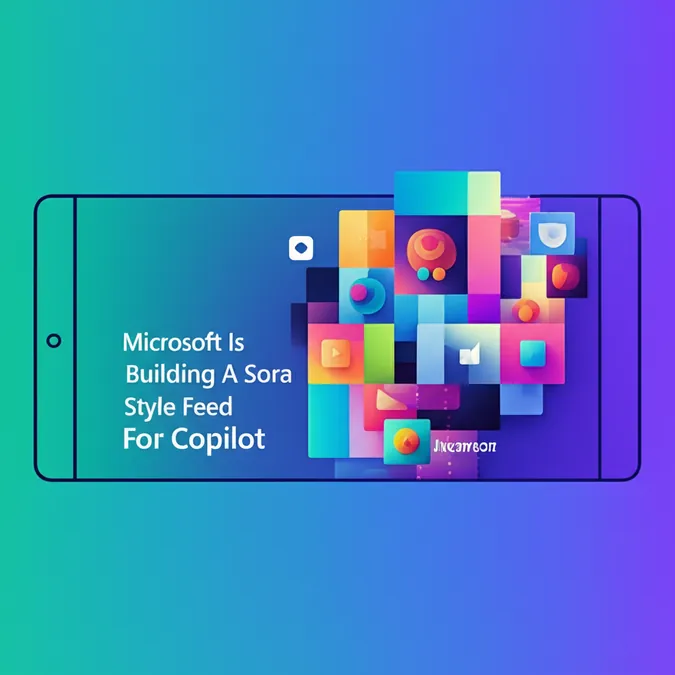Developer Offer
Try ImaginePro API with 50 Free Credits
Build and ship AI-powered visuals with Midjourney, Flux, and more — free credits refresh every month.
Copilot AI Transforms Single Images Into 3D Models

Microsoft has rolled out a groundbreaking new feature for its AI assistant, allowing users to generate complete 3D models from a single photograph. This new tool, named Copilot 3D, promises to make 3D creation accessible for use in games, animation, virtual reality, and 3D printing with just a few clicks.
Currently available to anyone signed in with a personal Microsoft account, Copilot 3D is not restricted by region. The process is as straightforward as it sounds: you simply upload a 2D image and let the AI handle the complex task of building a three-dimensional object from it.
Putting Copilot 3D to the Test: Hits and Misses
In early hands-on testing, the performance of Copilot 3D shows both incredible potential and clear limitations. The quality of the final model can vary significantly depending on the source image. For instance, the AI performed exceptionally well when tasked with creating a model of a Meta Quest headset, producing an impressive result from just one photo.

However, the tool seemed to struggle with more complex subjects, particularly electronic devices that had content displayed on their screens. This suggests that the AI works best with clear, well-defined objects without distracting internal details in the source photo.
How It Works: File Formats and Usage Guidelines
At present, Copilot 3D's functionality is limited to converting an existing 2D image into a 3D model; it does not support creating 3D artwork from text prompts. The models generated by the AI are saved in the GLB format, a common standard for 3D content. While GLB files are widely supported, users may need to convert them to other formats for editing in specialized software like Blender.
To create a model, you can use JPG or PNG files up to 10MB in size. It's important to adhere to Copilot's code of conduct, which strictly prohibits the use of copyrighted material. While the AI might process copyrighted images, doing so could risk suspension of your account.
What Is Copilot Labs?
Copilot 3D is being introduced through Copilot Labs, Microsoft's experimental platform for testing new AI capabilities with a select group of users before a wider release. By visiting the Copilot Labs page, you can explore other innovative features currently in development, such as Copilot Vision and Copilot Actions. One of its successful graduates, a feature called "Think Deeper," is now a standard part of the main Copilot experience. Availability for Labs features can vary by region, but Copilot 3D is accessible globally to users with personal Microsoft accounts.
Beyond 3D: Copilot's Integration with GPT-5

The release of Copilot 3D coincides with another major update: the integration of OpenAI's latest model, GPT-5. Microsoft has confirmed that users can now access what is being called the "best AI model to date" directly within Copilot. To use it, simply select the "Smart" option from the drop-down menu in the Copilot search box.
While GPT-5 offers more advanced capabilities, it has also faced some criticism for being less personable than its predecessors. With OpenAI planning to deprecate older models, users will soon have to adapt to the new version, whether they prefer it or not.
Compare Plans & Pricing
Find the plan that matches your workload and unlock full access to ImaginePro.
| Plan | Price | Highlights |
|---|---|---|
| Standard | $8 / month |
|
| Premium | $20 / month |
|
Need custom terms? Talk to us to tailor credits, rate limits, or deployment options.
View All Pricing Details

